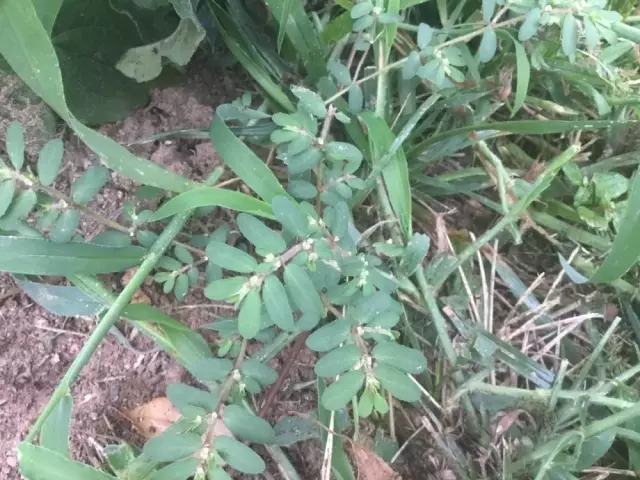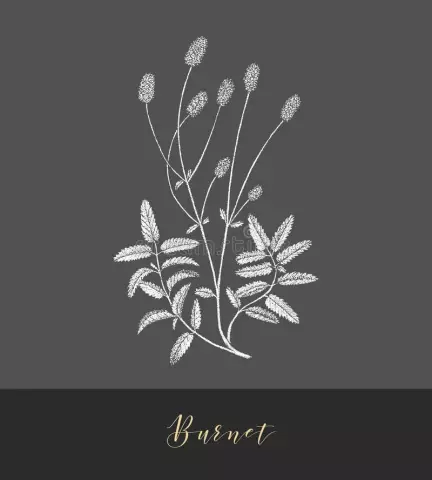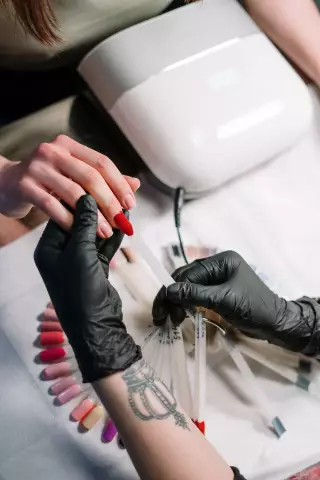- Author Rachel Wainwright [email protected].
- Public 2023-12-15 07:39.
- Last modified 2025-11-02 20:14.
European hoof
Instructions for use:
- 1. Useful properties
- 2. Application of leaves and roots
- 3. Contraindications
Useful properties of European clefthoof

The European hoof is a plant from the Kirkazonov family with green, shiny leaves on shaggy petioles, with the same slightly shaggy stems, and a pungent specific smell. The European Clefthoof blooms in April and May with bell-like flowers of a dark brown-red color.
The pharmacy name of the plant is the rhizome of the clefthoof, the people also call the flower hernia, hare leaf, vomit root.
In official medicine, the root of the European clefthoof is used for the preparation of medicines, and in folk medicine, both the root and fresh leaves are used.
Clefthoof is collected in ravines and deciduous forests.
The main purpose of the plant is to treat the chronic form of alcoholism, for which in late summer and autumn rhizomes and European clefthoof root are collected. It is believed that it is best to use fresh roots and herbs for treatment. Raw materials are stored in boxes lined with paper from the inside. If there are no conditions for keeping the roots fresh, they can be dried at a temperature of no more than 35 degrees, but it should be borne in mind that the healing properties of the plant are partially lost.
Essential oils, alkaloids, asaronic acid, bornyl acetate, glycosides, coumarin, phytosterols, flavonoids, astringents, resins, organic acids, mucus, saponin were found in the rhizomes of the plant.
Application of leaves and roots of the European clefthoof
In the treatment of alcoholism using the roots of the European clefthoof, there are two approaches: one is used when a person does not recognize his addiction, and the second, when there is a conscious desire to get rid of alcoholism.
For a person who is being treated by relatives, imperceptibly for himself, they cook such a decoction: one tablespoon of dry European clefthoof root is poured with water and boiled over low heat for 5 minutes. After that, the broth is infused for one hour, filtered, and placed in the refrigerator. The resulting product is poured into alcohol for a person at the rate of one tablespoon of decoction per 200 ml of vodka. "Medicine" causes a person to vomit and the treatment itself is generally based on the development of a reflex of aversion to alcohol, so you will need to add the broth to the alcohol several more times. As practice shows, after 3-4 times alcohol without addition of clefthoof broth will also induce vomiting.
If a person is being treated deliberately, it is desirable that the therapy takes place under the supervision of a physician. The recipe can be used the same. You can prepare such a remedy: one teaspoon of a teaspoon of clefthoof is mixed with two teaspoons of green pericarp of walnut and one teaspoon of this mixture is poured with wine (4 liters), insisted for 2 weeks, 1 glass of 1-2 r / day is drunk before meals. In the course of treatment, the patient feels nausea, tightness in the sternum, is in a painful state, he may periodically start vomiting. All these sensations make a person give up alcohol.
It was also found that the European claw has a bronchodilatory, anti-inflammatory, expectorant effect, therefore, in addition to treating alcoholism, the plant is used to treat pneumonia, bronchitis, tuberculosis, asthma, colds, diseases of the gastrointestinal tract, liver, urinary and gall bladder, bile ducts. The clefthoof also helps in neurotic conditions, with increased excitability, migraine, insomnia, headaches. For this, an infusion or decoction of the plant is prepared, which is diluted with hot milk or honey immediately before use.

To prepare the daily rate of tincture, two teaspoons of European clefthoof are poured with 250 ml of boiling water, insisted in a thermos.
Lotions with a decoction can be done for eczema that has arisen on nerves.
It is also noted that a non-concentrated tincture from the leaves of the European Clefthoof helps with gynecological diseases, increases the tone of the veins, accelerates blood flow, and restores normal cardiac activity.
Contraindications
It is undesirable to be treated with a European hoof on your own - the plant is poisonous, and exceeding the permissible dosage can lead to serious disruption of the intestines, stomach, kidneys, liver, gallbladder.
When treating alcoholism with the help of a clefthoof, do not give more than two tablespoons of broth at a time.
Decoctions and tinctures from the plant are categorically contraindicated for heart failure.
Information about the drug is generalized, provided for informational purposes only and does not replace the official instructions. Self-medication is hazardous to health!






